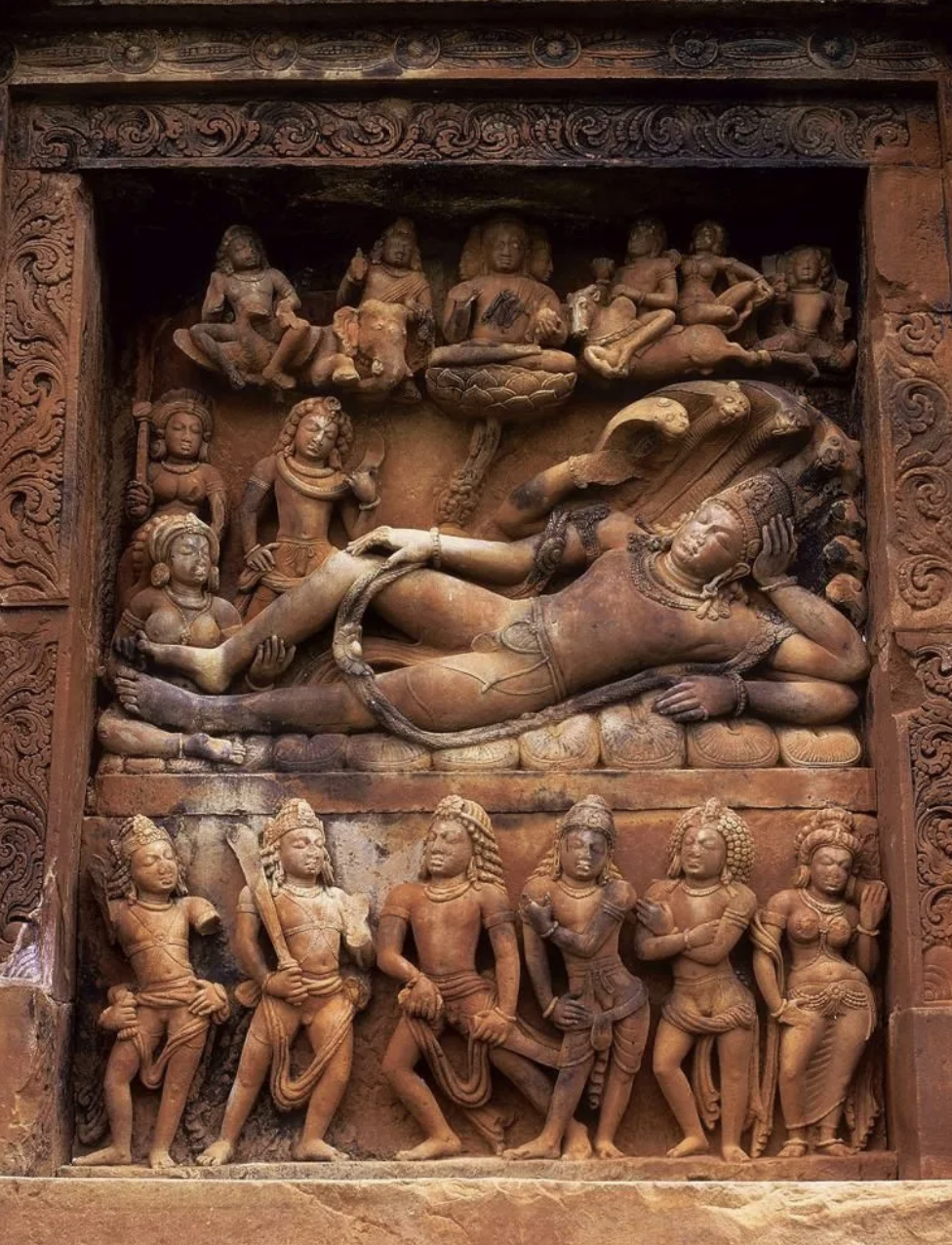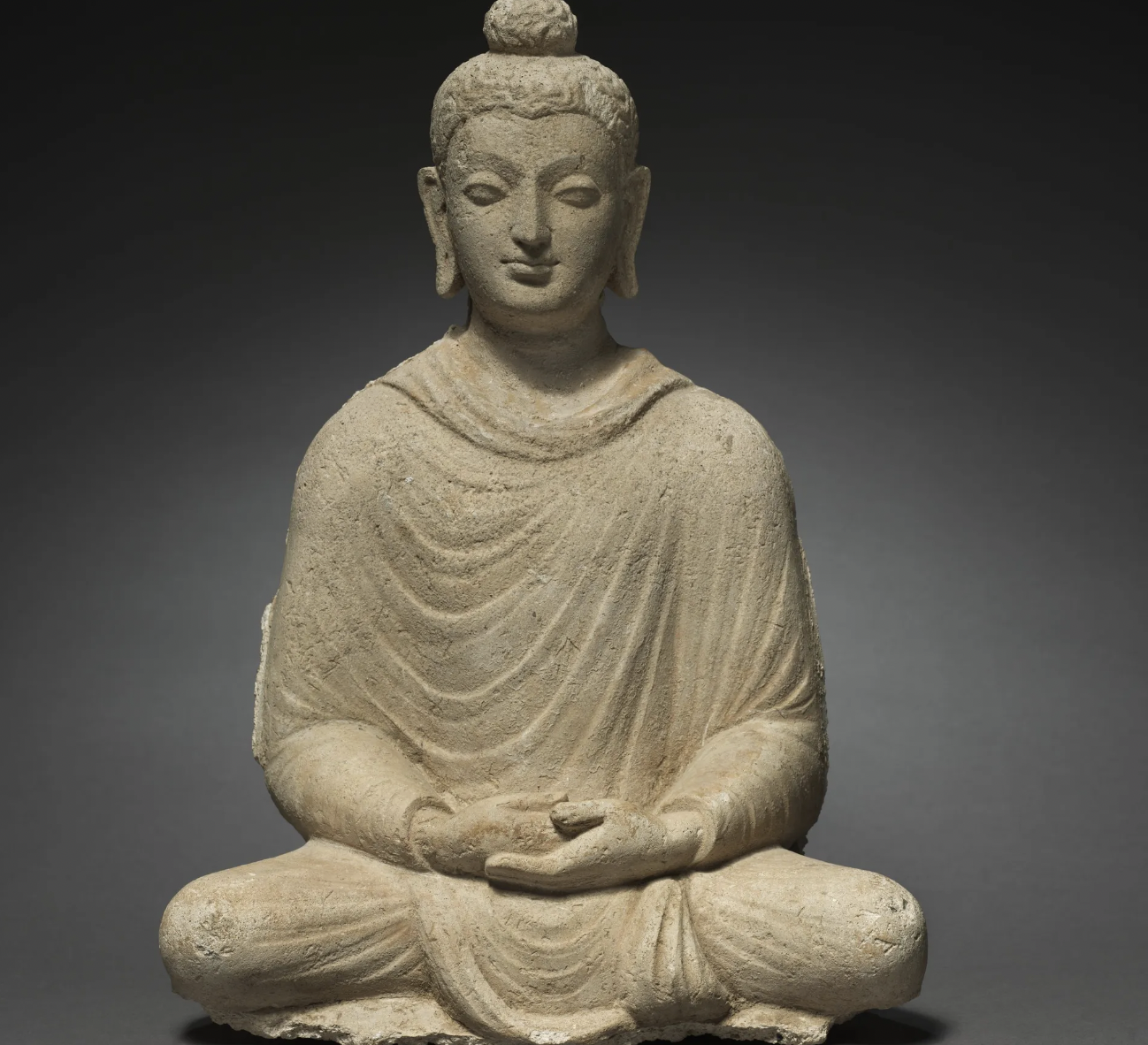The Recognition of Sakuntala // Indian Art
1/22
There's no tags or description
Looks like no tags are added yet.
Name | Mastery | Learn | Test | Matching | Spaced |
|---|
No study sessions yet.
23 Terms
Major Themes
Love
Duty
Loss and Recovery
Title
The Recognition of Śakuntalā
by Kālidāsa
King Dusyanta
The King; Noble
Sakuntala
The Heroine; Innocent
Kanva
The Father; Spiritual
Durvasas
The Spiteful; Unwavering
Vidusaka
The Aide; Comedy relief
Anasuya; Priyamvada
The Friends
Marica
The Divine Sage

Vishnu Asleep On the Serpent
The use of multiple arms distinguished the divine from the human, and illustrated the far-reaching power of Vishnu

Seated Buddha
Representative of meditation, self-reflection, and inner peace

The Pillar of Ashoka
Represents lions facing the four cardinal directions
Placed at locations relevant to Buddha’s life
Joins the Earth to the Heavens
Created by Ahsoka, a tyrannical king who converted to non-violence and buddhism
Inscribed with Buddhist teachings
Indus Civilization
The first Indian Civilization
Along the Ganjees river
Well-planned cities
Extensive trade with Mesopotamia
Metalworking
Indoeuropean Period
The second Indian civilization
Agrarian; shephers
Grain-growing
The Vedic Period
Began when the Vedas became the holy texts of India
Brought about the caste system
Four Castes
Brahmins (Priests; holy people)
Warriors (Military; political officials)
Farmers (Everyday people)
Untouchables (Originally the slave population)
Hinduism
Religion believes in the transmigration of souls (reincarnation)
All life is sacred
The human soul works up the scale of being
Hinduism lacks a founder or spokesperson
Dharma: Duty to your station in life
Kama: Desire
Kalidasa
Kalidasa
Likely worked with the court
Unknown whether he was highborn or not
One of India’s greatest playwrights
Language
Language
Sanskrit (High-born; noblemen)
Prakrit (Women; slaves; lowborn women)
Gesture
The use of language variety in the Recognition of Sakuntala allows the reader to discern the class of the speaker
Nataka
Heroic Romance
Rasa
Tone and feeling
Mauryan Dynasty
The third king: Emperor Ashoka
The first ruler about whom we have solid historical information
A powerhouse of the silkroad
Left no great languages; only art
The Gupta Dynasty (330 CE)
The role of religion expanded
HINDU
The Dynasty from which Kalidasa wrote
Likely for their court
Adapted the Mahabharata
Spawned two main languages:
Sanskrit: Formal language
Prakrit: Every-day language
The use of language variety in the Recognition of Sakuntala allows the reader to discern the class of the speaker